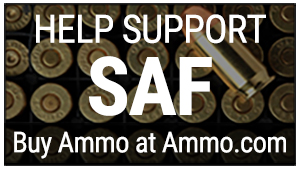
By Mike Nesbitt | Contributing Editor
The true Needle Gun was a German military breech-loading bolt action single shot rifle, designed by Dreyse, which used a paper cartridge.
It had a long firing pin, somewhat like a needle, which penetrated the cartridge from the back, kept going forward through the powder charge, then striking and detonating a percussion cap which was located at the base of the elongated bullet. That did have the advantage of igniting the powder from the front, so the majority of the powder charge was not forced down the barrel behind the bullet as it burned. Whether or not that advantage was actually realized in terms of muzzle velocity or not is a question I cannot answer.
But the term “needle gun” was also used for the trapdoor action rifles, mainly for the Springfields from 1866 and on, but also for the Snider-Enfield rifles, in .577 Snider, which had a trapdoor that operated sideways. Both of those rifle types had long firing pins which were housed in the trapdoors of the actions. Several of the civilian references to those trapdoor rifles referred to them as “needle guns.”
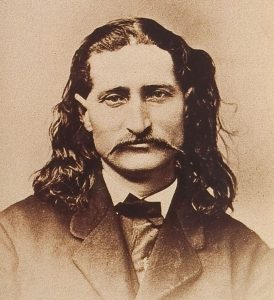
One such reference came from Wild Bill Hickok when he talked about his fight with a couple of members of the 7th Cavalry in Hays City, Kansas during 1870. Hickok had some dealings with disorderly troopers and other members of that unit figured they had a score to settle. It started without gun play but it didn’t end that way. Hickok fought and shot his way out of the saloon and dived through a window. Then he hid out in the cemetery along with his .50-70 needle gun until morning. That ended his peace officer employment in Hays City.
And Hickok’s needle gun was a rather interesting piece. It was a sporterized Springfield which was somewhat unique because it had cheekpieces on both sides of the buttstock. It also had double set triggers housed in the standard military trigger guard. We can assume this was the rifle that Hickok used when he was a scout and a buffalo hunter. After he was killed in Deadwood, in 1876, this rifle was buried with him but it was reclaimed when Hickok’s remains were moved from his first grave to the place where he rests now, just outside of Deadwood.

My friend Scott Sibley (the powder horn maker) had a copy of the Hickok rifle made for him and that is shown in the photo accompanying this story. I’ve never shot Sibley’s copy but I have held and aimed it. Quite the gun, and Sibley has an intriguing collection of modified Springfield trapdoors.
For my own “needle gun,” I wanted it to have the lines of a “Gemmer,” looking like a Hawken mountain-rifle. With that in mind, some parts began being collected a small number of years ago and finally the finished rifle has taken shape. That collection of parts began with a lock for the 1873 Springfield along with a breech for an 1868 rifle mated with a trapdoor from an 1870 issue. Those pieces all fit together quite nicely and the 1868 breech already had the ejector for the old .50-70 cartridge, which was just what I wanted.

To go along with those parts, a special barrel was ordered from Oregon Barrel Company (part of The Gun Works in Springfield, Oregon which was an octagon .50 caliber tube, straight with 1 1/8 inches across the flats, and 32-inches in length. It has a rate of twist at one turn in 32 inches, which is very good for shooting the typical 450-grain bullets that the .50-70 usually likes.
For the Hawken styled hardware or furniture, I turned to The Hawken Shop up in Oak Harbor, Washington. In my opinion, The Hawken Shop has the best-looking Hawken furniture available and it is in the style of the S. Hawken rifles, which is exactly what should be fitted to a Gemmer styled gun. Those parts include the butt plate, trigger guard, triggers and trigger plate, plus the forearm nose cap. Of course, in addition to those parts, The Hawken Shop also produces kits for complete Hawken rifles.
Sights were already considered long before any work was actually done toward building the rifle. For a front sight, my favorite wide bladed Hawken sight was used, that is the wide silver blade in a copper base which is made by Cash Manufacturing Company.
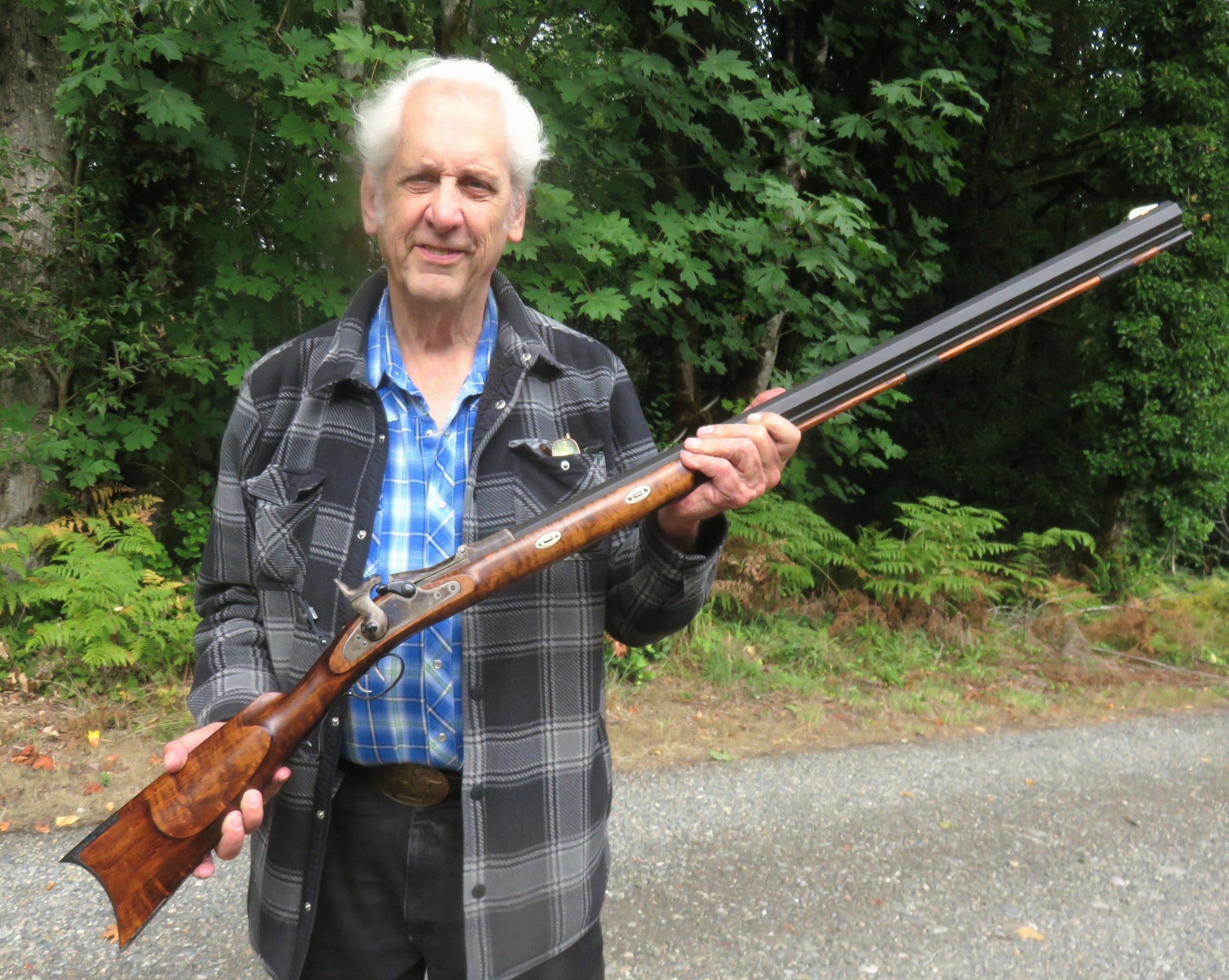
For a rear sight, I wanted a tang peep sight much like what was used on the old Officer’s Model Springfield of 1875, with the sight’s base inlet into the wood of the stock fairly high on the wrist. The sight I found to be the best for that type of installation is made by Montana Vintage Arms, most often referred to as MVA, their “Muzzleloader Sporting Tang Sight.” That sight is easily adjustable for elevation and it does have a small amount of windage should that be needed. (Most windage adjustments will be made with the front sight which can be moved right or left in the dovetail.)
After the barrel was delivered from Oregon Barrel Company, I took the barrel and the action to Pat Dulin at C. Sharps Arms. He fitted the barrel to the action and also chambered the barrel for the .50-70 cartridges. Pat also added a fly to the old Springfield lock which would allow the use of set triggers. The fly lets the hammer go forward without letting the sear engage the half- or quarter-cock notches on the tumbler. Without that fly, the hammer would simply go back to half-cock instead of striking the firing pin to shoot the gun.
The task of fitting all of those pieces together in a maple stock fell to Allen Cunniff and we had several discussions on how some of those pieces should be featured. One of his questions to me was, “Do you want a cheekpiece?” That could be considered a good question because Hawken-styled rifles almost always had a cheekpiece, on the left side of the stock for right-handed shooters. But I shoot left-handed, not originally but that’s how things are now.
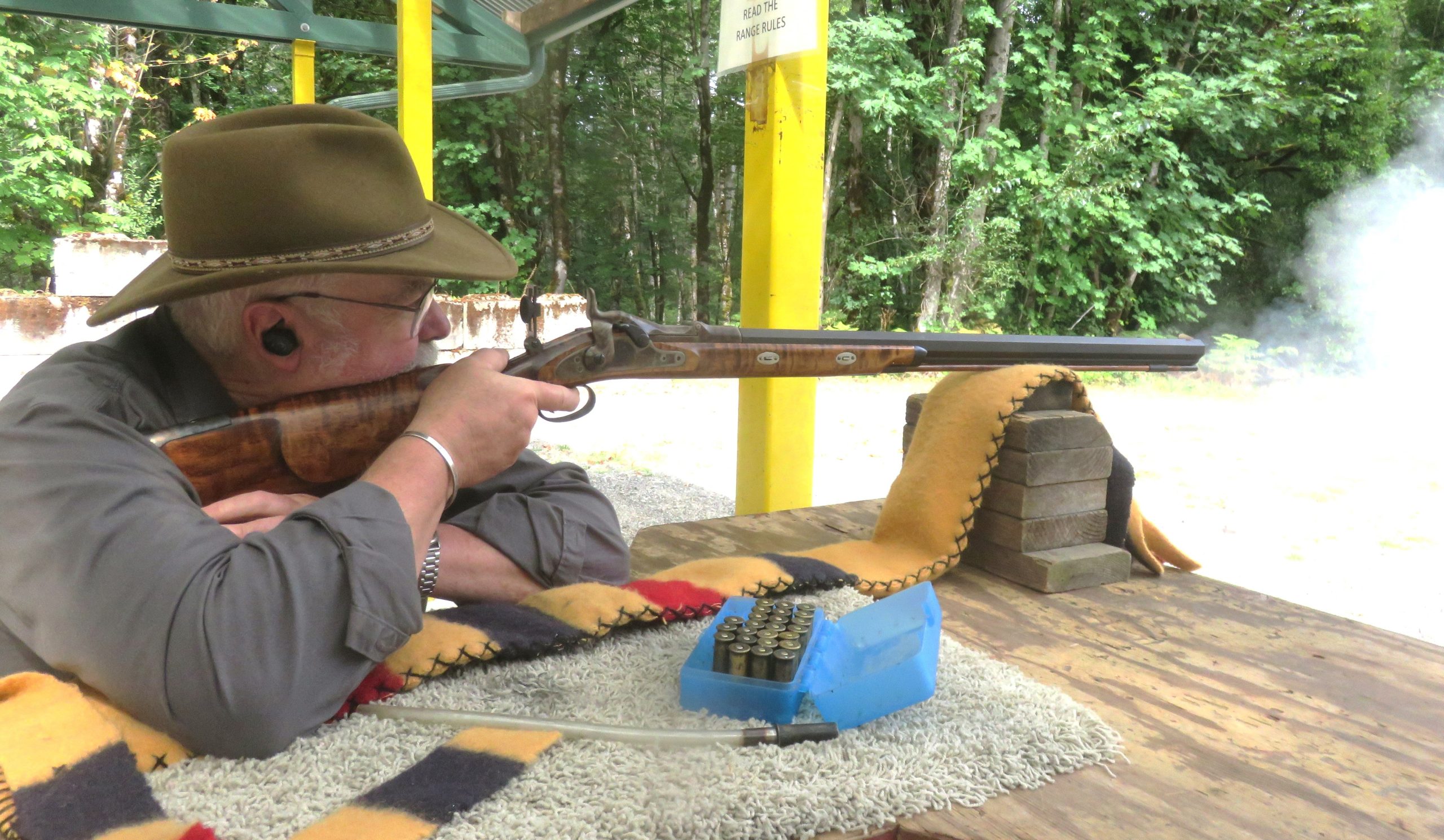
We considered putting a cheekpiece on the right side of the stock, where a patch box often went on the old guns. That, I must guess, would tend to make right-handed shooters shy away from this rifle should I ever want to sell it. So, Allen measured the stock blank that would be used and determined that it was wide enough to put cheekpieces on both sides of the stock, similar to the Hickok rifle, although the cheekpieces on my Springfield are a different style. That was done and both Allen and I are very pleased with how that turned out. The whole stock turned out well, with all of the furniture and “ingredients” added. Then it was my job to finish the stock which was done with a walnut stain and then several coats or layers of Tru-Oil.
Following that, the rifle was assembled again and taken to the range for some initial shooting. There are some who would say this rifle is a real monster. It has the lines of a muzzleloader with an overall length of 52 inches and it weighs a full 13 ½ pounds. That’s heavier than most Hawken-style rifles but most of the weight in is that 1 1/8-inch wide .50 caliber barrel. And this .50-70 is a real boomer, for sure!
And then the rifle was taken to Quigley, mainly to show it off to some other shooters but another reason was really at the top of the list. On our way back from Quigley, we stopped at the C. Sharps Arms shop where this rifle was taken apart again. That was done so we could leave several of the smaller parts, including the lock, the trapdoor and action, triggers and trigger guard plus the trigger plate, butt plate, nose cap, and toe plate with Pat Dulin to be given the very deluxe style of color casehardening, called pack hardening. The non-pack hardened steel parts, such as the barrel, under-rib and ramrod pipes, and the ramrod entry pipe where the ramrod enters the forearm, were blued.
When the casehardened parts were shipped to me, the rifle was re-assembled and thoughts toward shooting it climbed immediately to the top. It just so happened that I had some black powder .50-70 ammo ready and waiting, so Allen and I made a special trip to the rifle range, even remembering to take along a couple of targets.
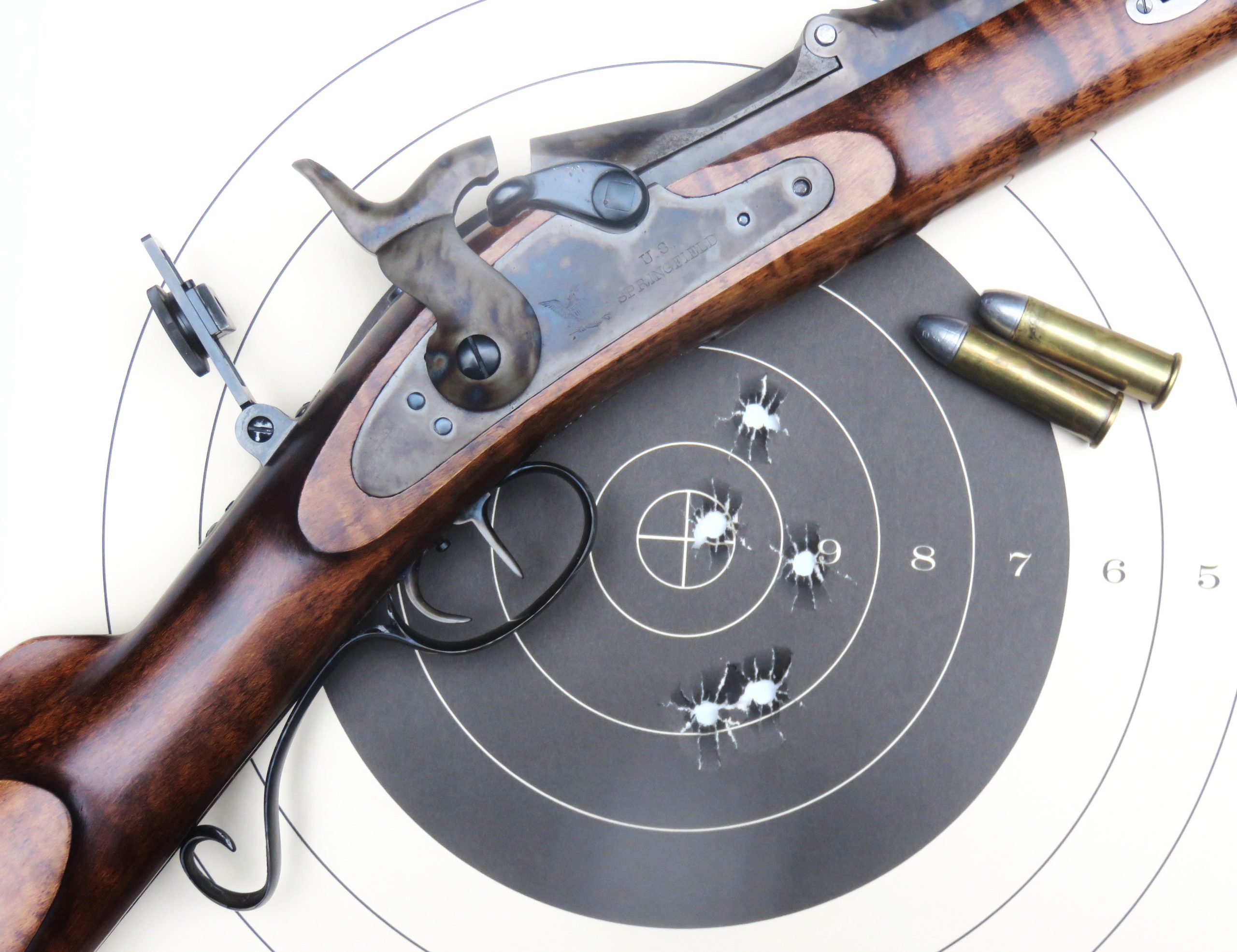
The ammunition was more of my favorite loadings for the .50-70. That includes the 450-grain bullets from Accurate Molds’ #52-450L2 over 65 grains of Olde Eynsford 2F powder. Now that Olde Eynsford is hard to find, I’d use the same amount of Swiss 2Fg powder. The bullets were lubed with a homemade grease, based on the “Number 1” lube as recommended by Paul Matthews in his book on Bullet Lubricants for the Black Powder Cartridge Rifle, and ignition was provided by Remington large pistol primers.
That first target, a fairly small one, was posted at just 50 yards, and to begin with, the bullets were not even hitting the paper. That was the “fault” of the sights, certainly not the rifle. Allen was spotting my shots and windage as well as elevation corrections and soon I had bullet holes going through the target. A favorable five-shot group was put on that 50-yard target just before attention was given to a standard 100-yard bullseye target, posted at 100 yards distance.
Before firing a shot at 100 yards, the MVA rear sight was adjusted to a “guestimated” setting, a guess based on more than a few years of shooting with .50-70s. When making an adjustment for elevation with the MVA Muzzleloader Sight, care must be taken to not disturb the windage. Both windage and elevation are “set” by tightening the sight’s aperture, and when the aperture is loosened to move either one of those settings, the other is also easily moved, perhaps without realizing it. You don’t need to ask me how I know…
And the first five shots fired at 100 yards certainly pleased me. The group is a little taller than what I might hope for but that doesn’t take anything away from the group as it is. Center to center, this group measures just 3 1/16 inches which for me, especially while using a silver blade front sight held at 6 o’clock on the black, is pretty good. Yes, to state it again, I am pleased.
Of course, I’m only reporting on my first trip to the range after getting the rifle completed. More shooting will be done which will include targets at 200 yards. The MVA Muzzleloader rear sight might do for shots out to 300 yards but this customized trapdoor “needle gun” does not have the sights for shooting at longer distances.
After my 100-yard target was shot, Allen selected another target to enjoy putting five rounds through this heavy .50-70. His target was not quite as good as mine, which is unusual when our targets are generally compared, but his comment after doing his shooting is what I remember the most. He said something to the effect that if I ever wanted to sell that gun, to mention it to him first. I immediately promised that he’d be the very first on the list but my Hawken-styled “needle gun” will remain in my care for a long time to come.



